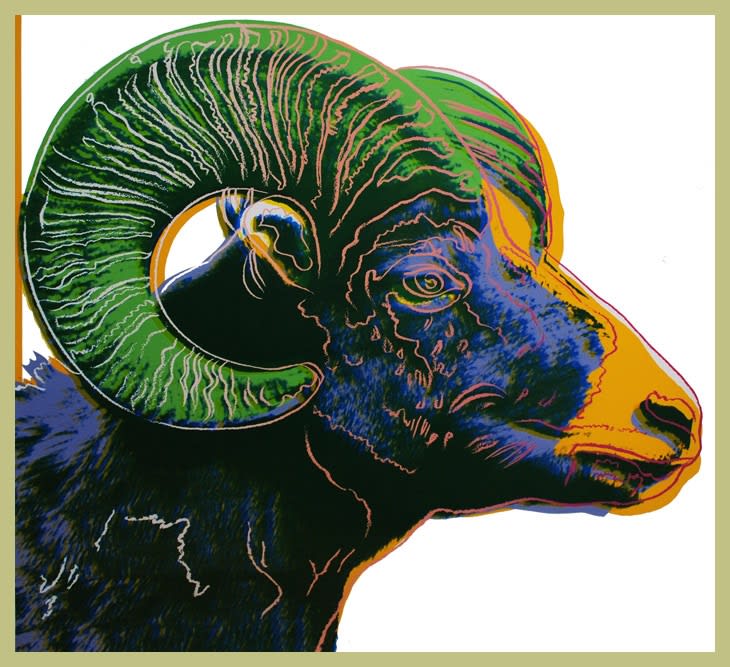Andy Warhol
Bighorn Ram (from the Endangered Species portfolio), 1983
Screenprint in colours on Lenox Museum Board
38 x 38 in
96.5 x 96.5 cm
96.5 x 96.5 cm
Signed and numbered on recto
Copyright The Artist
A powerful image, mounted against a solid blue background, ‘Endangered Species: Bighorn Ram,’ boasts one of the most admired animals among the Apsaalooka, or Crow people, central to the Apsaslooka...
A powerful image, mounted against a solid blue background, ‘Endangered Species: Bighorn Ram,’ boasts one of the most admired animals among the Apsaalooka, or Crow people, central to the Apsaslooka tribal lands, the sheep are the name sake for what is today called the Bighorn Mountain Range in northern Wyoming. The Bighorn sheep originally crossed into North America over the Bering Land Bridge from Siberia, sparking the population in North America to peak in the millions, and thus the Bighorn sheep entered into the mythology of Native Americas. However, by 1900 the population had crashed to several thousand. Efforts established in 1930 by the Boy Scouts of America created two Bighorn game ranges in Arizona. Through an increased program of reintroductions, national parks, and reduced hunting, together with a decrease in domesticated sheep near the end of World War II, allowed the Bighorn sheep to make a further comeback.
In 1983 Warhol was commissioned by his friend and publisher Ron Feldman and his wife Freyda to create the series of 10 endangered species. Both Freyda and Ronald were celebrated political activists who were very active philanthropists. In 1983, they asked Warhol, who was a friend, to create a portfolio of ten endangered species to raise environmental consciousness. Warhol fondly referred to this series as his “animals in makeup,” given the bold pop colours he uses to portray the animals as large than life, exemplified in the Bighorn Ram FS II302 print.
In 1983 Warhol was commissioned by his friend and publisher Ron Feldman and his wife Freyda to create the series of 10 endangered species. Both Freyda and Ronald were celebrated political activists who were very active philanthropists. In 1983, they asked Warhol, who was a friend, to create a portfolio of ten endangered species to raise environmental consciousness. Warhol fondly referred to this series as his “animals in makeup,” given the bold pop colours he uses to portray the animals as large than life, exemplified in the Bighorn Ram FS II302 print.
